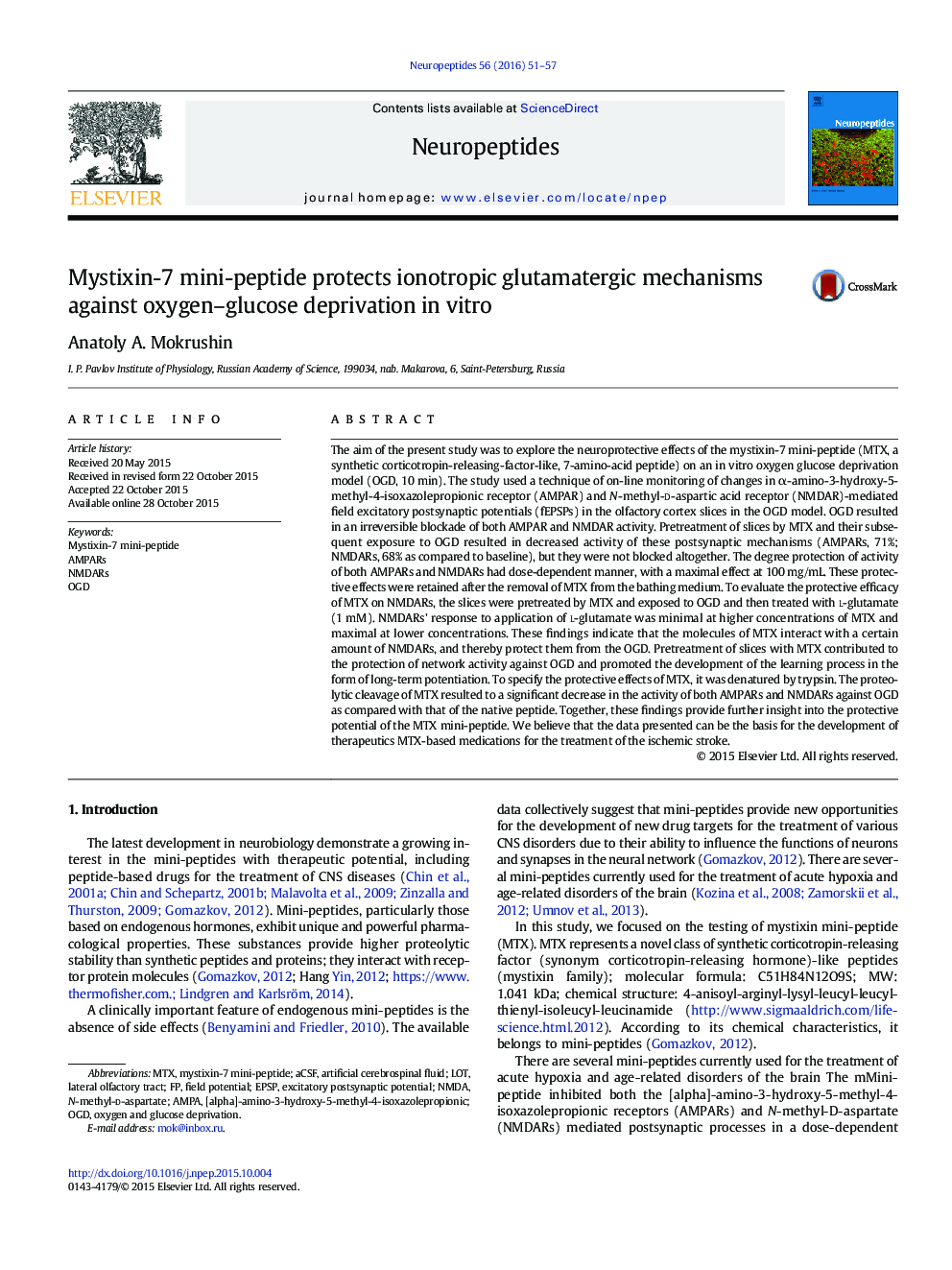| Article ID | Journal | Published Year | Pages | File Type |
|---|---|---|---|---|
| 2807943 | Neuropeptides | 2016 | 7 Pages |
•The MTX mini-peptide has shown protective activity in the acute model ischemia.•MTX's protective effects were concentration-dependent.•MTX promoted long-term potentiation.•An enzymatic treatment of MTX is accompanied by a disappearance of protective effects.
The aim of the present study was to explore the neuroprotective effects of the mystixin-7 mini-peptide (MTX, a synthetic corticotropin-releasing-factor-like, 7-amino-acid peptide) on an in vitro oxygen glucose deprivation model (OGD, 10 min). The study used a technique of on-line monitoring of changes in α-amino-3-hydroxy-5-methyl-4-isoxazolepropionic receptor (AMPAR) and N-methyl-d-aspartic acid receptor (NMDAR)-mediated field excitatory postsynaptic potentials (fEPSPs) in the olfactory cortex slices in the OGD model. OGD resulted in an irreversible blockade of both AMPAR and NMDAR activity. Pretreatment of slices by MTX and their subsequent exposure to OGD resulted in decreased activity of these postsynaptic mechanisms (AMPARs, 71%; NMDARs, 68% as compared to baseline), but they were not blocked altogether. The degree protection of activity of both AMPARs and NMDARs had dose-dependent manner, with a maximal effect at 100 mg/mL. These protective effects were retained after the removal of MTX from the bathing medium. To evaluate the protective efficacy of MTX on NMDARs, the slices were pretreated by MTX and exposed to OGD and then treated with l-glutamate (1 mM). NMDARs' response to application of l-glutamate was minimal at higher concentrations of MTX and maximal at lower concentrations. These findings indicate that the molecules of MTX interact with a certain amount of NMDARs, and thereby protect them from the OGD. Pretreatment of slices with MTX contributed to the protection of network activity against OGD and promoted the development of the learning process in the form of long-term potentiation. To specify the protective effects of MTX, it was denatured by trypsin. The proteolytic cleavage of MTX resulted to a significant decrease in the activity of both AMPARs and NMDARs against OGD as compared with that of the native peptide. Together, these findings provide further insight into the protective potential of the MTX mini-peptide. We believe that the data presented can be the basis for the development of therapeutics MTX-based medications for the treatment of the ischemic stroke.
Graphical abstractFigure optionsDownload full-size imageDownload high-quality image (62 K)Download as PowerPoint slide
